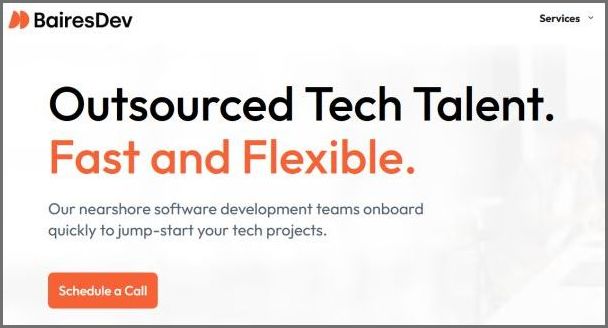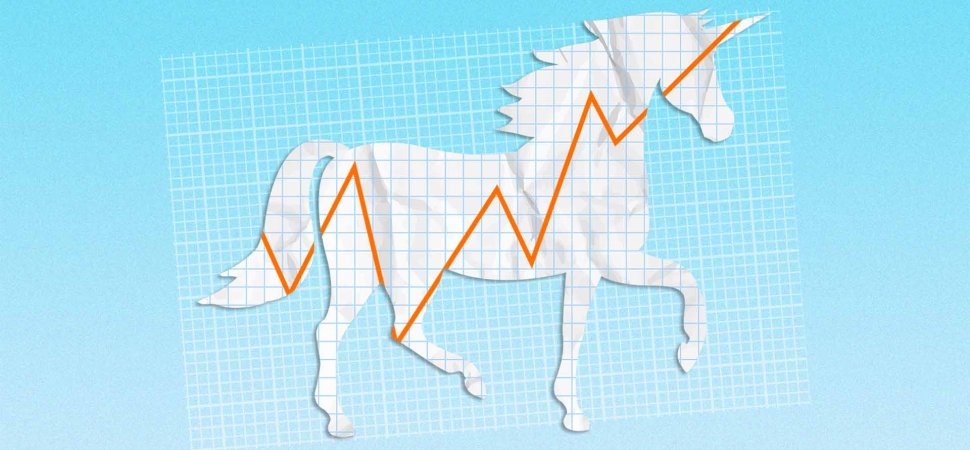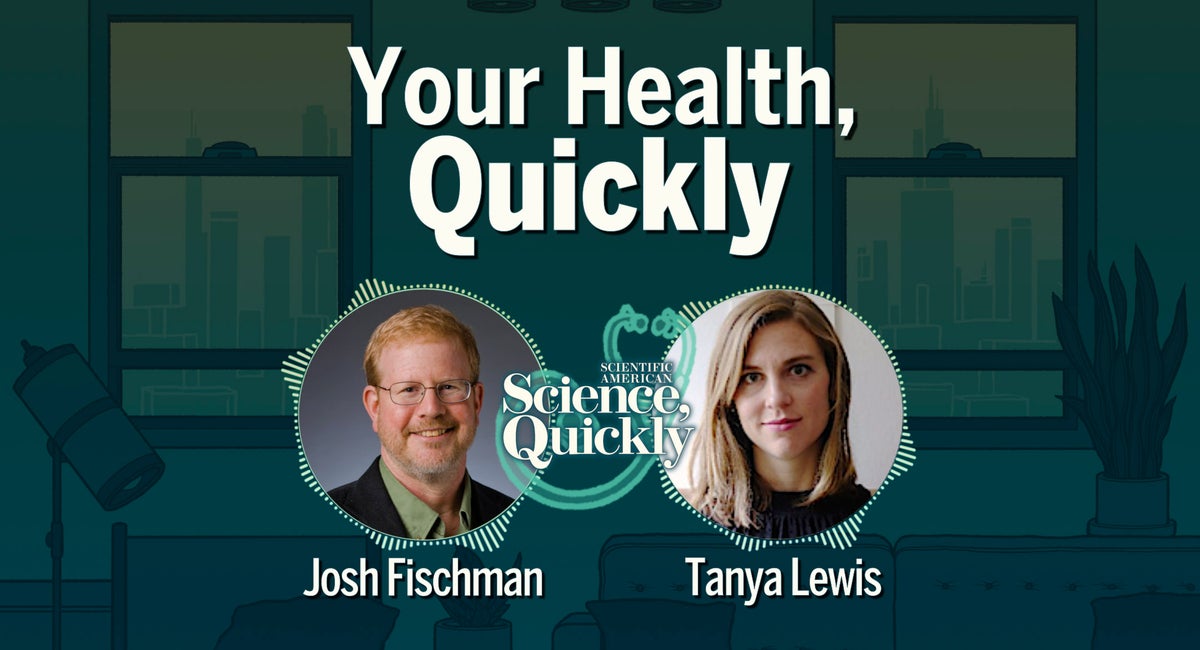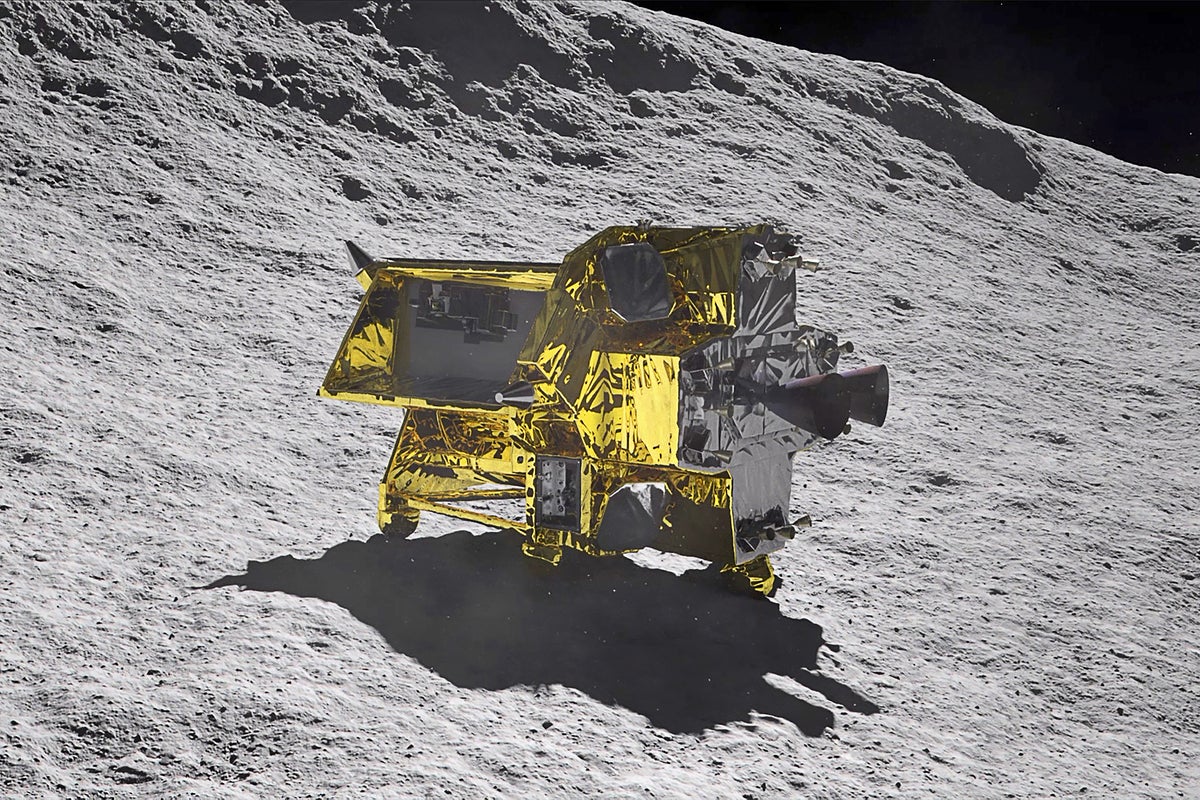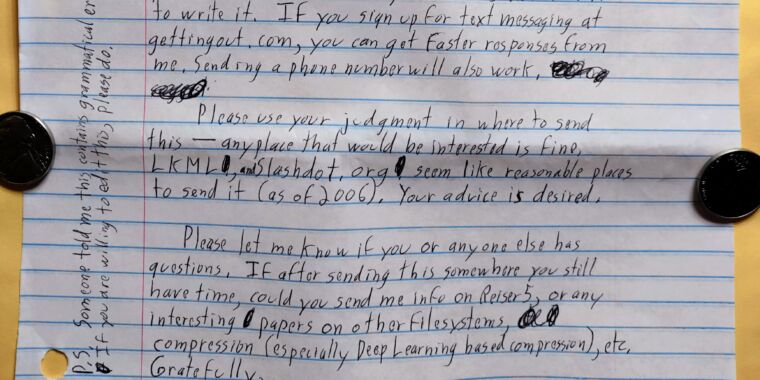   
CEO Picks - The best that international journalism has to offer!
 S23 S23
| ? |
 |
 S1 S1Think of Start-ups as Shots on Goal 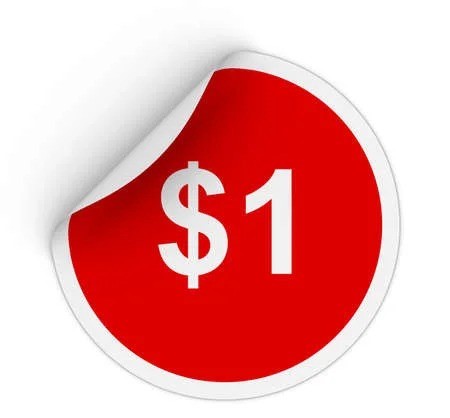  With concern running high about the prospects for continued economic growth, two recent e-books show where the debate is centered now: on the question of whether we can, through sheer inventiveness, keep driving the productivity gains that lead to higher incomes. George Mason’s Tyler Cowen is pessimistic, seeing a “great stagnation” setting in. A counterargument comes from MIT’s Erik Brynjolfsson and Andrew McAfee, who find in the rapidly advancing technology of robotics and other productivity enhancers every reason to be optimistic. These opposing conclusions suggest once again why economists as a group are not all that good at predicting the future.
Continued here
|
| ? |
 |
 S2 S2Finally, a Good Idea from Congress (And It Helps Start-Ups)   Congress has been the piñata in every poll lately, but recently presented bipartisan legislation — the Start-up Innovation Credit Act of 2013 (SICA) introduced by Senator Chris Coons (D-DE) — is proof that Capitol Hill has its share of good ideas. In brief, SICA allows start-ups to take advantage of the R&D tax credit for the first time.
Continued here
|
| ? |
 |
|
| ? |
 |
|
|
 S3 S3Why Founders Are Afraid to Talk About Exit Strategies   Acquisitions are a much more common end point for startups than IPOs. So why does no one talk about them? There are five common myths and biases that get in the way, and prevent founders from thinking ahead: optimism bias, present bias, signaling failures, the myth of entrepreneurial risk taking, and the myth of acquisition failures. Understanding these, and knowing how to work around them, can ensure founders have the broadest slate of possible options, and aren’t left scrambling when an acquisition deal is suddenly on the table.
Continued here
|
 S4 S4Closing the Chasm Between Strategy and Execution   Setting strategy is elegant. It’s a clean and sophisticated process of collecting and analyzing data, generating insights, and identifying smart paths forward. Done at arm’s length in an academic fashion, tight logic is the only glue needed to hold ideas together. The output is a smooth narrative in a professional-looking document made up of Venn diagrams, 2×2 matrices, and high-level plans of attack. Jettison this business. Focus efforts here. Build up this organizational capability. Executives buy into the plan. The strategists, confident in their intellectual prowess, quietly recede into the background.
Continued here
|
 S5 S5 S6 S6Idolize Bill Gates, Not Steve Jobs   Apple is undoubtedly the gold standard of today’s tech world. In fact, it’s probably the gold standard of American industry at the moment. Its innovative design, user interface, and ecosystem make it a titan in any category it enters. And it’s clear that Steve Jobs was the reason Apple rose to its current heights from the brink of bankruptcy. In the wake of his death, HBR espoused his greatness — something I’ve done as well. And he was great. Steve Jobs has likely been our generation’s most important leader in the world of business. But Steve Jobs is not the most important leader from the world of business. While Jobs should be who MBAs and industrial designers try to emulate, I’m not sure he’s who we should idolize. That respect should be bestowed on someone we talk less and less about, Bill Gates.
Continued here
|
 S7 S7Get Ahead by Betting Wrong   Companies that invest heavily in R&D are often torn between emerging technologies, wondering which will win in the market and is therefore the one to develop. (The classic example is VHS versus Betamax video recorders.) Conventional wisdom suggests that they pay dearly for getting it wrong. But my research shows that betting on a losing technology and then switching to the winner can position a company to come out ahead of competitors that were on the right track all along.
Continued here
|
 S8 S83 Ways Marketers Can Earn -- and Keep -- Customer Trust   A 2021 survey of 1,000 consumers concluded that more than 80% consider trust a deciding factor in their buying decisions, despite the fact that only 34% trust the brands they use. As trust in institutions diminishes, consumers are increasingly skeptical of where they put their money and receive their information. The author recommends three marketing strategies for brands to maintain and foster trust in their brands: 1) Do not overspin, 2) Avoid half-truths, and 3) Read the room and adjust.
Continued here
|
 S9 S9How Women of Color Get to Senior Management   We also know that having women of color in prominent roles at companies is good for the bottom line. The problem is that, to date, companies have not been great at promoting women of color to the highest levels of their organizations. To increase diversity at senior executive levels, more must be known about one group in particular: women of color in midlevel leadership, who successfully developed and progressed beyond individual contributor and first-line management. What made their ascent possible? How did (or didn’t) managers play a role? And what factors helped or hindered advancement in their organization? Research identifies four key skills women of color can cultivate, plus ways their organizations can help them along the way.
Continued here
|
 S10 S10 S11 S11Get More Funding for Your R&D Initiatives   Although financial analysts widely acknowledge that innovation is a key driver of business growth and business sustainability, the financial markets do not reward innovation investments, largely because companies do a poor job of making innovation transparent to investors and analysts. There are legitimate reasons for being careful with information but the authors argue that companies could benefit from sharing progress with their project pipelines and communicating their decision-making progress.
Continued here
|
 S12 S12Case Study: Would Vegan Offerings Dilute Our Brand?   When Jamie Colvin, an Olympic gold medalist for shot-putting, launched Protein Power Plates, in 2013, he envisioned it as a macho alternative to salad bars and smoothie shops for the health-conscious. He’d originally intended to open a steak house—a “Valhalla for carnivores”—but when his sister Mila, a recent business school graduate and an associate at a New York venture capital firm, pointed out that her young professional friends were less interested in fancy sit-down restaurants than in “fast casual” spots where they could get their choice of freshly made meals—pick-your-own meat, vegetables, and carbs—in half the time and for half the price, he took her advice and shifted gears. Together they pitched the idea to the partners at her company, who agreed to give them seed funding.
Continued here
|
 S13 S13How Samsung Became a Design Powerhouse   Until 20 years ago, South Korea’s Samsung Electronics manufactured inexpensive, imitative electronics for other companies. Its leaders valued speed, scale, and reliability above all. The few designers working for the company were dispersed in engineering and new-product units, and they had little status in an organization that emphasized efficiency and engineering rigor.
Continued here
|
 S14 S14How Not to Manage Innovation   Welcome to the zombieconomy — where things happen backwards. Case in point: today’s best example of how not to manage innovation comes from those who should be masters of radical innovation: venture investors. The venture industry is in crisis because of an ongoing inability to grow and nurture meaningful innovation. I’ve come across many examples […]
Continued here
|
 S15 S15Strategy's No Good Unless You End Up Somewhere New   Innovation isn’t always strategic, but strategy making sure as heck better be innovative. By definition, strategy is about allocating resources today to secure a better tomorrow. It is important, however, to understand the nuances and complexities of innovation as they relate to strategy. Here is my list of the four most important:
Continued here
|
 S16 S16 S17 S17Why Being Wrong Feels So Right (And What You Can Do About It)   What if you made a major mistake — and you didn’t even notice? Even if it was right in front of your nose? Chances are, it happens on a regular basis. That’s what I took away from the recently concluded PopTech conference, whose theme this year was “Brilliant Accidents, Necessary Failures, and Improbable Breakthroughs.” Kevin […]
Continued here
|
 S18 S184 Ways to Manage Deadlines on Cross-Cultural Teams   My friend likes to tell the story of what happened when she planned for a cross-cultural group of people to meet up to go to the lake when they were on holiday in Europe. As she tells it, the Germans arrived 10 minutes early, the Belgians arrived exactly on time, the Americans a few minutes later, and the Lebanese rolled in about an hour after everyone else had arrived.
Continued here
|
 S19 S19A Guide to Mentors, Sponsors, and Coaches   What’s the difference between a mentor, sponsor, and career coach? Are there best practices for finding one? Should you become a mentor yourself? These tips will help you better understand the people that will move you forward in your career: Build a network of mentors. When you’re just getting started in your career, it can be helpful to form a mentor “board of directors” to guide you. Your different mentors will likely have different insights that can help you in your career journey. Find a bridge mentor. “Bridge mentorships” intentionally connect diverse individuals to help level the playing field and provide more equal opportunities. Try joining an employee resource groups (ERGs) within your organization to meet potential mentors who understand or have been educated on your unique challenges. Become a reverse mentor. You have valuable knowledge too — insights that when shared with senior colleagues can have a positive impact on your organization. This is called reverse mentoring, and it can help both you and your company advance. Don’t forget about sponsors. Sponsors go out of their way to help you gain visibility and land opportunities that can advance your career. Your boss can be a valuable sponsor because they’re a senior leader who knows your work and track record better than anyone. Consider a career coach. A career coach is someone who specializes in listening to the questions, doubts, and ideas you have about your current role or your future career path. Do some research on Google or LinkedIn and look for coaches you think would be a good match given their background, expertise, and focus.
Continued here
|
 S20 S20 S21 S21 S22 S22 S24 S24 S25 S25 S26 S26 S27 S27 S28 S28 S29 S29 S30 S307 Steps to Repair a Damaged Business Partnership   No long-term partnership — personal or professional — is without challenges. Getting key issues on the table in a timely way and having open, direct, and respectful conversations can reduce frustrations and facilitate needed change. In this article, the authors outline seven steps to take if your business partnership has gotten rocky.
Continued here
|
 S31 S31How to Vet a Corporate Intelligence Vendor   Demand for intelligence vendors is substantial and increasing. In 2022, global cyber threat intelligence was estimated to be a $4.93 billion industry, and U.S. security services was a whopping $48.1 billion. Geopolitical and security risk intelligence is an unquantified but essential and rapidly growing part of the story. But how do you know whether an intelligence vendor aligns with your company’s needs, risk tolerance, and ethics? The authors, from Harvard University’s Belfer Center’s Intelligence Project, have developed a database of 70 vendors that corporate intelligence professionals identified as informing their work. Their systematic analysis of this dynamic ecosystem revealed four key questions for corporate decision makers to ask in order to maximize their return on vendors.
Continued here
|
 S32 S32Taupo: The super volcano under New Zealand's largest lake   Located in the centre of New Zealand's North Island, the town of Taupo sits sublimely in the shadow of the snow-capped peaks of Tongariro National Park. Fittingly, this 40,000-person lakeside town has recently become one of New Zealand's most popular tourist destinations, as hikers, trout fishers, water sports enthusiasts and adrenaline junkies have started descending upon it.The namesake of this tidy town is the Singapore-sized lake that kisses its western border. Stretching 623sq km wide and 160m deep with several magma chambers submerged at its base, Lake Taupo isn't only New Zealand's largest lake; it's also an incredibly active geothermal hotspot. Every summer, tourists flock to bathe in its bubbling hot springs and sail through its emerald-green waters. Yet, the lake is the crater of a giant super volcano, and within its depths lies the unsettling history of this picturesque marvel.
Continued here
|
 S33 S33Message sticks: Australia's ancient unwritten language  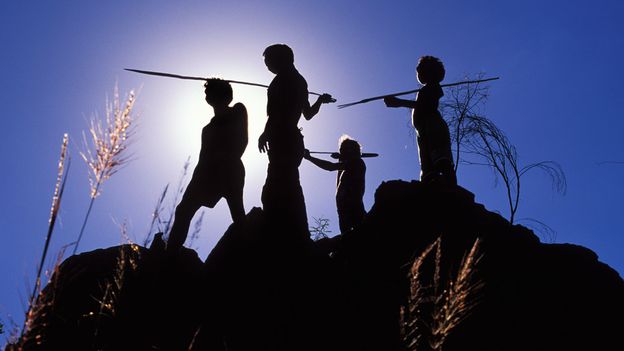 The continent of Australia is home to more than 250 spoken Indigenous languages and 800 dialects. Yet, one of its linguistic cornerstones wasn't spoken, but carved.Known as message sticks, these flat, rounded and oblong pieces of wood were etched with ornate images on both sides that conveyed important messages and held the stories of the continent's Aboriginal people – considered the world's oldest continuous living culture. Message sticks are believed to be thousands of years old and were typically carried by messengers over long distances to reinforce oral histories or deliver news between Aboriginal nations or language groups.
Continued here
|
 S34 S34Did Australia's boomerangs pave the way for flight?   The aircraft is one of the most significant developments of modern society, enabling people, goods and ideas to fly around the world far more efficiently than ever before. The first successful piloted flight took off in 1903 in North Carolina, but a 10,000-year-old hunting tool likely developed by Aboriginal Australians may have held the key to its lift-off. As early aviators discovered, the secret to flight is balancing the flow of air. Therefore, an aircraft's wings, tail or propeller blades are often shaped in a specially designed, curved manner called an aerofoil that lifts the plane up and allows it to drag or turn to the side as it moves through the air.
Continued here
|
 S35 S35The Alpine acrobatics that make ski lift journeys safer   It's late December and I am at the foot of a ski lift in the Dolomites in northern Italy, with snow-covered peaks looming high above me. Large glass bubbles are gliding peacefully up and down the mountain, suspended from a single steel rope. I am about to board one of them, and learn about the behind-the-scenes repairs that keep them safe. But first, I'll need to take a deep breath – and overcome my own personal terror of this dangling, gravity-defying icon of the Alps.Cable cars, also known as ropeways, are actually among the safest forms of transport in the world. According to an unpublished global analysis from 2022 by Tüv Süd, a testing and certification company that tests their safety around the world, riding a cable car is more than ten times safer than travelling by car, and is even safer than flying. Comparing the number of fatalities for every 100 million hours of travel, for every 25 fatalities from car accidents, and 16 from flying, there are only two from cable car accidents, according to the analysis, which is based on data from more than 20 members of the International Meeting of Technical Authorities for Cableways (ITTAB). Most of the cable car accidents were caused by passenger behaviour, according to the analysis.
Continued here
|
 S36 S36This Nearby Brown Dwarf May Have Auroras--And a Moon, Too   Glowing methane on a brown dwarf dozens of light-years from Earth may signal the presence of a large lunar companionAn artist's concept of the cold brown dwarf W1935, which is located 47 light-years from Earth. Astronomers using NASA’s James Webb Space Telescope found an infrared glow from methane in W1935's atmosphere, which is a possible sign of aurorae (shown here in red) on the brown dwarf.
Continued here
|
 S37 S37Israel's War in Gaza Is Creating Enormous Hidden Health Problems   A toxic mix of dust, ash and other material from 15 million tons of rubble now blankets Gaza and all who live there, posing major health concernsPalestinian civilians and rescuers help clear the rubble in the heavily bombarded city center of Khan Yunis in the southern Gaza Strip following overnight Israeli shelling, on October 10, 2023.
Continued here
|
 S38 S38 S39 S39Here's What I Learned as the U.S. Government's UFO Hunter   A forthcoming investigational report from an office of the Pentagon has found no evidence of aliens, only allegations circulated repeatedly by UFO claim advocatesSean Kirkpatrick, then-director of All-Domain Anomaly Resolution Office at the Department of Defense, gives a presentation at a public meeting of NASA’s unidentified anomalous phenomena (UAP) independent study team on May 31, 2023.
Continued here
|
 S40 S40Peregrine, a Private U.S. Moon Lander, Burns Up in Earth's Atmosphere   Astrobotic’s Peregrine lunar lander, which endured a crippling postlaunch malfunction for longer than expected, could set a precedent for a coming wave of U.S. moon missionsAstrobotic’s Peregrine lunar lander as seen on Tuesday, Nov. 14, 2023, as the spacecraft awaited integration with its launch vehicle at NASA's Kennedy Space Center in Cape Canaveral, Fla. A post-launch anomaly brought the private mission to an early end, with Peregrine ultimately burning up upon reentry into Earth's atmosphere.
Continued here
|
 S41 S41Asthma Drug Still Being Prescribed to Kids Despite Potential Mental Health Risks   The allergy and asthma drug montelukast, also known as Singulair, can cause psychiatric side effects—and researchers aren’t sure whyIn 1998 an asthma and allergy drug called montelukast hit the U.S. market under the name Singulair. In the years that followed, commercials filled with flowers and cats proclaimed that it was “a different way to treat allergies.” During the next two decades it became many doctors’ go-to antiallergy and asthma prescription—especially for children because, unlike other asthma medications, it comes in pill form and does not require fiddling with an inhaler. “It used to be prescribed like vitamins,” says Andrei Constantinescu, a pediatric pulmonologist at Columbia University Medical Center.
Continued here
|
 S42 S42Ice Fishing Turns Deadly as World Warms   Record warmth last December and balmy temperatures in early January have turned lake ice in Minnesota into a death trap. Fatalities, injuries and rescues are piling upCLIMATEWIRE | MINNEAPOLIS — On Friday, Richard Gadbois, 80, did what he had done countless times on freezing January days in northern Minnesota.
Continued here
|
 S43 S43 S44 S44 S45 S45 S46 S46How film changes the way we see the world   "People told me this was an unadaptable book, so the only logical thing to do was to try to adapt it," says writer, producer and filmmaker Ava DuVernay of her work taking the award-winning title "Caste" from page to screen. In conversation with Pat Mitchell, DuVernay talks about the resulting film, "Origin," and discusses her process for turning ideas into pictures that pack a punch.
Continued here
|
 S47 S47Inequality Is a Health Risk--and It's Getting Worse   In 2024, the maternal mortality rate (MMR) in the United States and the United Kingdom will grow, although postmortem reviews conclude that 80 percent of maternal deaths in high-income countries are preventable. Rates in high-income countries across Western Europe and Asia did decrease between 1990 and 2010, yet in some of these countries, like the UK, MMRs have risen over the past decade. The US MMR has been an outlier throughout, almost doubling in the first decades of the 21st century.Reasons to support the prediction that MMRs will go up include the continuing consequences of the Covid-19 pandemic. However, MMR increases in the US and UK predated Covid, suggesting the pandemic exacerbated deeper problems.
Continued here
|
 S48 S48How to Opt Out of Comcast's Xfinity Storing Your Sensitive Data   Your internet service provider could have a good idea of who you're planning to vote for in the 2024 election as well as the gender of the last person you slept withâand it's saving that information for later. Major internet providers, like Comcast's Xfinity, stockpile more revealing data than users might initially realize.For example, Xfinity customers are automatically opted in to allow the company to store sensitive personal information. This could include your "race, ethnicity, political affiliations, or philosophical beliefs," according to Xfinity's website. Your sexual orientation, immigration status, biometric info, and precise location are also considered to be sensitive data. While Comcast does not sell this info, the company does use sensitive data in a variety of ways, like to serve up personalized ads and recommendations.
Continued here
|
 S49 S49A Glimpse at the Future of Streaming in 4 Mind-Blowing Stats   Pea-Max? Para-flix? Regardless of what portmanteau they might end up with, odds are good that streaming services are going to spend a bit of time merging in 2024. Warner Bros. Discovery and Paramount were already talking about it at the end of last year, continuing the trend that started when WarnerMedia and Discovery merged in the first place. After years of Everybody Has a Streaming Service, that plethora of streaming video apps is getting pared down as people start making tough decisions about which streamers are actually worth it. If ad-supported models, password-sharing crackdowns, and cancellations don’t turn streamers into profit powerhouses this year, consolidation might, and the results look awfully boring.In a report released this week, Parrot Analytics, a firm known for calculating what value any particular show has for a streamer, looked at what various streamers would have to offer in four possible merger scenarios: Warner Bros. Discovery merging with Paramount Global, Netflix with Paramount, NBCUniversal with Warner, and Paramount with NBCUniversal, or NBCU for short. The results show a world where a Warner Bros. Discovery and Paramount merger would create the greatest demand in terms of people wanting to watch the shows exclusive to those companies—and one where the results are so muddled they’re almost meaningless.
Continued here
|
 S50 S50Apple Shares the Secret of Why the 40-Year-Old Mac Still Rules   On January 24, Apple’s Macintosh computer turns 40. Normally that number is an inexorable milestone of middle age. Indeed, in the last reported sales year, Macintosh sales dipped below $30 billion, more than a 25 percent drop from the previous year’s $40 billion. But unlike an aging person, Macs now are slimmer, faster, and last much longer before having to recharge.My own relationship with the computer dates back to its beginnings, when I got a prelaunch peek some weeks before its January 1984 launch. I even wrote a book about the Mac—Insanely Great—in which I described it as “the computer that changed everything.” Unlike every other nonfiction subtitle, the hyperbole was justified. The Mac introduced the way all computers would one day work, and the break from controlling a machine with typed commands ushered us into an era that extends to our mobile interactions. It also heralded a focus on design that transformed our devices.
Continued here
|
 S51 S51How the Mighty Heat Pump Is Helping (but Not Solving) EVs' Cold Weather Problem   Perhaps you've heard: In many places, it's really very cold out. Deep freezes hit wide bands of the US this week; snow and freezing rain have swept across northern Europe. This is all less than ideal for electric vehicles, which historically have not loved the cold. A handful of Chicago Tesla Supercharger stations made headlines this week after some EVs affected by the temperatures completely ran out of battery and had to be towed.Electric vehicles have a hard time in cold weather for two reasons. One is chemical: Lithium-ion batteries, the kind that make electric cars (and phones) go, rely on lithium ions moving from their negatively charged conductors (cathodes) to the positively charged ones (anodes). Cold makes the ions move more slowly to the anode, meaning it's harder to charge a chilly battery than a toasty one. The other reason is more practical: Cold weather means car occupants are more likely to turn on the heat, and the heaters used to warm up a car draw power from the electric battery. This reduces range, sometimes significantly. Tests by AAA, Consumer Reports, and the EV battery data company Recurrent have found that freezing temperatures reduce vehicles' ranges by somewhere between 16 and 46 percent. (Very cold weather also reduces gas-powered vehicles' mileage, by between 15 and 24 percent.)
Continued here
|
 S52 S52Ask Ethan: What explains the Fibonacci sequence?   One of the most fascinating facts about the natural world is that so many entities within it — both biologically and purely physically — obey a specific set of patterns and ratios. Many galaxies exhibit spiral shapes and structures, as do a wide variety of plant structures: pinecones, pineapples, and sunflower heads among them. Ammonites, shelled animals that went extinct more than 60 million years ago, also show that spiral pattern, where one of the key features of spirals is that the next “wind” around outside the prior one displays a specific length ratio to the size of the prior, interior winding.That ratio, in any such structure, is often extremely close to the ratio of two adjacent numbers found in the Fibonacci sequence. This mathematical sequence, often taught to children, simply starts with the numbers “0” and “1” and then gets the next term in the sequence by adding the two prior terms together. It’s arguably the most famous mathematical sequence of all, but what explains the sequence’s pattern, and is it truly, inextricably linked to nature? That’s what Ragtag Media wrote in to ask, inquiring:
Continued here
|
 S53 S53How the neuroplastic "Tetris Effect" can unblock work-life obstacles   Sophie arrived late to the Game of Thrones craze. She held off for a while because she “doesn’t do dragons,” but she watched the first episode, and now she’s hooked. She watched the entire first season in a single lounge-lizard day. As she gets into bed that night and goes to sleep, she sees dragons. She sees swords and medieval armor. Her imagination conjures up, jumbles about, and relives nine hours of Westeros. Her waking mind absorbs, and her sleeping mind repeats.John has watched a lot of Louis Theroux. For John, no other interviewer is half as interesting as the awkward, strange-looking Brit. John has learned about the niche, eccentric fringes of society, and he loves how Louis gets people to open up. But John’s friends have noticed something odd. John has started talking like Louis. His intonation and his beat are all Theroux. He even pauses more often and seems to embrace an interrogative conversation. He doesn’t know it, but John is being someone else.
Continued here
|
 S54 S54Biology or technology: Which moves more information per second?   When people try to define life, they tend to focus on things like reproduction or metabolism. It’s true that moving matter and energy around to simply stay alive or produce offspring is a fundamental characteristic of living systems. But there’s another and perhaps more all-encompassing way of understanding life that puts information front and center. In this view, what makes life special — what makes it different from all the other physical systems — is its ability to use information. Stars, for example, can be described in terms of information but it doesn’t make much sense to think of them as using that information. By “use,” I mean deliberately storing, copying, transferring, and processing information toward some end. But what if we want to look at life as a planetary-scale process? The idea of the biosphere — the sum total of Earth’s life — goes back more than a century. The Russian biogeochemist Vladimir Vernadsky coined the term biosphere when he recognized that life was not a passive rider on Earth’s geophysical evolution. Instead, Vernadsky saw that life as the biosphere was an equal player in setting the planet’s trajectory along with the other “geospheres”: atmosphere (air), hydrosphere (water), cryosphere (ice), and lithosphere (land). Since then, the concept of the biosphere has become foundational to fields ranging from climate science to astrobiology.
Continued here
|
 S55 S55Google search is losing the fight with SEO spam, study says   It's not just you—Google Search is getting worse. A new study from Leipzig University, Bauhaus-University Weimar, and the Center for Scalable Data Analytics and Artificial Intelligence looked at Google search quality for a year and found the company is losing the war against SEO (Search Engine Optimization) spam.
Continued here
|
 S56 S56 S57 S57 S58 S58 S59 S59 S60 S60Everything we learned today about Vision Pro configurations, specs, and accessories  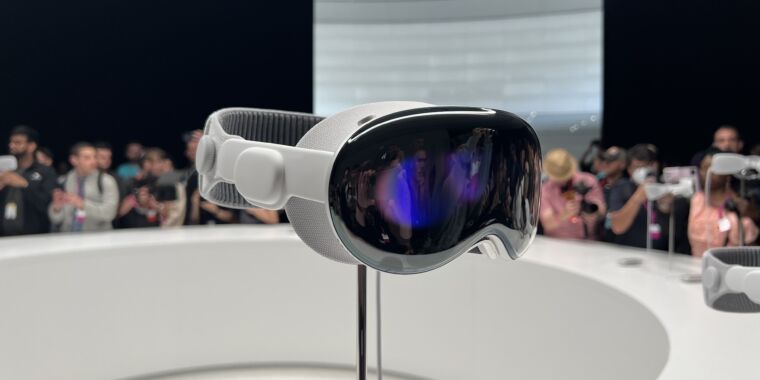 Apple's Vision Pro went up for preorder this morning at 8 am ET. As expected, shipment dates for preorders quickly backed up to March as initial supply was accounted for. Regardless of whether you're in for the start or taking a wait-and-see approach with Apple's ultra-pricey new device, though, we have access to a little more information about the device than we did before thanks to updates to the Apple Store website.
Continued here
|
 S61 S61 S62 S62WordPad out; 80Gbps USB support and other Win 11 features in testing this month   Windows 11's big feature update in September included a long list of minor changes, plus the Copilot AI assistant; that update was followed by Windows 11 23H2 in late October, which reset the operating system's timeline for technical support and security updates but didn't add much else in and of itself. But Windows development never stops these days, and this month's Insider Preview builds have already shown us a few things that could end up in the stable version of the operating system in the next couple of months.
Continued here
|
 S63 S63 S64 S64 S65 S65Photos of the Week:   Drone pilots on Ukraine’s front line, scenes from the Dakar Rally in Saudi Arabia, an icy purification bath in Japan, animal blessings in Spain, a snow-covered stadium in New York, kitesurfing in South Africa, a new volcanic eruption in Iceland, and much more A woman holds her dog as it reacts while being blessed by a priest at the Cathedral San Bernardino de Siena during the ceremony commemorating the Feast of San Antonio Abad, the patron saint of domestic animals, in Xochimilco, on the outskirts of Mexico City, on January 17, 2024. #
Continued here
|
 S66 S66'Pok   Who would have guessed that the next great Pokémon show would be an office comedy? Netflix’s new animated series Pokémon Concierge is set on a small island resort where human and nonhuman guests can get away from it all—if they can figure out how to relax. The show is designed to be a guaranteed hit with children—four short episodes, cute animal characters, almost no plot—but, given its workplace setting, it’s just as much fun for an adult audience. The show introduces Haru (voiced by Non in Japanese and by Karen Fukuhara in the English dub), a young human stuck at a crossroads familiar to any 20- or 30-something. After a series of mishaps in her professional and social life, Haru packs up and arrives at the Pokémon Resort, landing a job as a concierge.On her second day, the kindly hotel boss, Ms. Watanabe, tells Haru that her job is to “make the Pokémon feel the exact same way that you do”—happy and relaxed. The only catch is that anxious, type-A Haru can’t stop working and struggles to take things in stride. Any small task or straightforward question tips Haru into an abyss of overthinking. When Ms. Watanabe asks Haru how her first day went, Haru pulls up an entire slideshow presentation replete with graphs and charts before realizing that her boss just wanted to know how she felt. Watching a Pokémon show whose main character has a job and social anxiety feels like watching the franchise grow up alongside its audience. For the Millennials who traded Pokemón cards in the 1990s, this series manages to address the nuances and worries of early adulthood.
Continued here
|
 S67 S67Erasing Jewish History Will Not Help Palestinians   The assertion that Jesus was Palestinian is often made in an effort to negate Jewish history.For Jews, the events of October 7—the worst massacre of Jews on a single day since the Holocaust—were horrifying and traumatizing. But what has happened in the three months since is also deeply unsettling, though in a different way. Much of the world, rather than offering empathy and compassion for Israel, has turned on it.
Continued here
|
 S68 S68Why Israel Is Taking the Genocide Case Seriously   South Africa dropped a bombshell on the international community in December, claiming in the International Court of Justice, the United Nations’ highest judicial body, that Israel is committing genocide in Gaza. No doubt Pretoria, a longtime supporter of Palestine and in a deteriorating diplomatic relationship with Israel, had political reasons to bring what most Israelis view as an outrageous claim. But to dismiss the case as political theater would be a mistake.Israel did not send a team of government attorneys to put up a defense in The Hague, or hire one of the leading members of the ICJ bar, merely because of politics. Rather, Israel understands the stakes: The ICJ’s ruling will influence how states, international organizations, and the public view not only the conflict in Gaza, but also Israel itself, and more broadly, the obligation of states to prevent genocide. The case could even encourage legal action against specific Israelis in courts worldwide.
Continued here
|
 S69 S69It's Just a Water Bottle   The world can be a baffling place. That’s true in many important senses, but also in plenty of unimportant ones, and the urge to make order and meaning doesn’t necessarily select for relevance. That’s why, for the past two weeks, a huge chunk of the internet’s attention has been focused on one baffling phenomenon in particular: What, exactly, is a Stanley cup, and why are suburbanites willing to scuffle over it in their most sacred space (their local Target)?Let’s recap. As the new year began, Stanley, a century-old company that for much of its history made reinforced lunch boxes and drinking vessels for outdoorsmen and blue-collar workers, launched three pink, limited-edition Valentine’s Day versions of its jumbo-size Quencher cups, all in different shades of pink and only available at Target. The third of these cups, which came out a few days after the first two, was the grandaddy of them all—a new addition to the brand’s ongoing partnership with Starbucks, glazed in a shimmer finish instead of Stanley’s standard matte. All three flew off the shelves. Fans lined up in parking lots in the predawn hours to increase their chances of snagging one. In at least one instance captured in a now-viral video, an argument erupted over who was cutting whom in line, fingers were pointed, and a store manager was summoned to referee. A few videos of rushing shoppers and tepid interpersonal conflicts, plus one that appears to show store patrons trying to tackle a man who had grabbed a box full of tumblers and made a run for it, did the rounds on TikTok before jumping to local news broadcasts and the generalized zeitgeist.
Continued here
|
 S70 S70The Spirit Airlines Paradox   Read one way, the decision this week by a federal judge to block JetBlue’s acquisition of Spirit Airlines is a milestone in the effort to revive American antitrust law. President Joe Biden has made competition enforcement a central part of his economic policy, and the JetBlue ruling marks the first time that federal regulators have ever won a lawsuit to stop a major U.S. airline merger. In his opinion, William G. Young—who was appointed by Ronald Reagan in 1985—explains in admirably plain language that absorbing Spirit would allow JetBlue to raise prices and reduce service on the routes where the two airlines currently compete. This would violate the federal Clayton Act—“a statute,” Young wrote, “that continues to deliver for the American people.”Yet Young’s decision also inadvertently struck an odd note—one that hints at the limits of what antitrust enforcement alone can do to improve air travel. “Spirit is a small airline,” he wrote. “But there are those who love it. To those dedicated customers of Spirit, this one’s for you.”
Continued here
|
 |
TradeBriefs Publications are read by over 10,00,000 Industry Executives About Us | Advertise Privacy Policy Unsubscribe (one-click) You are receiving this mail because of your subscription with TradeBriefs.
Our mailing address is GF 25/39, West Patel Nagar, New Delhi 110008, India |














































































































































